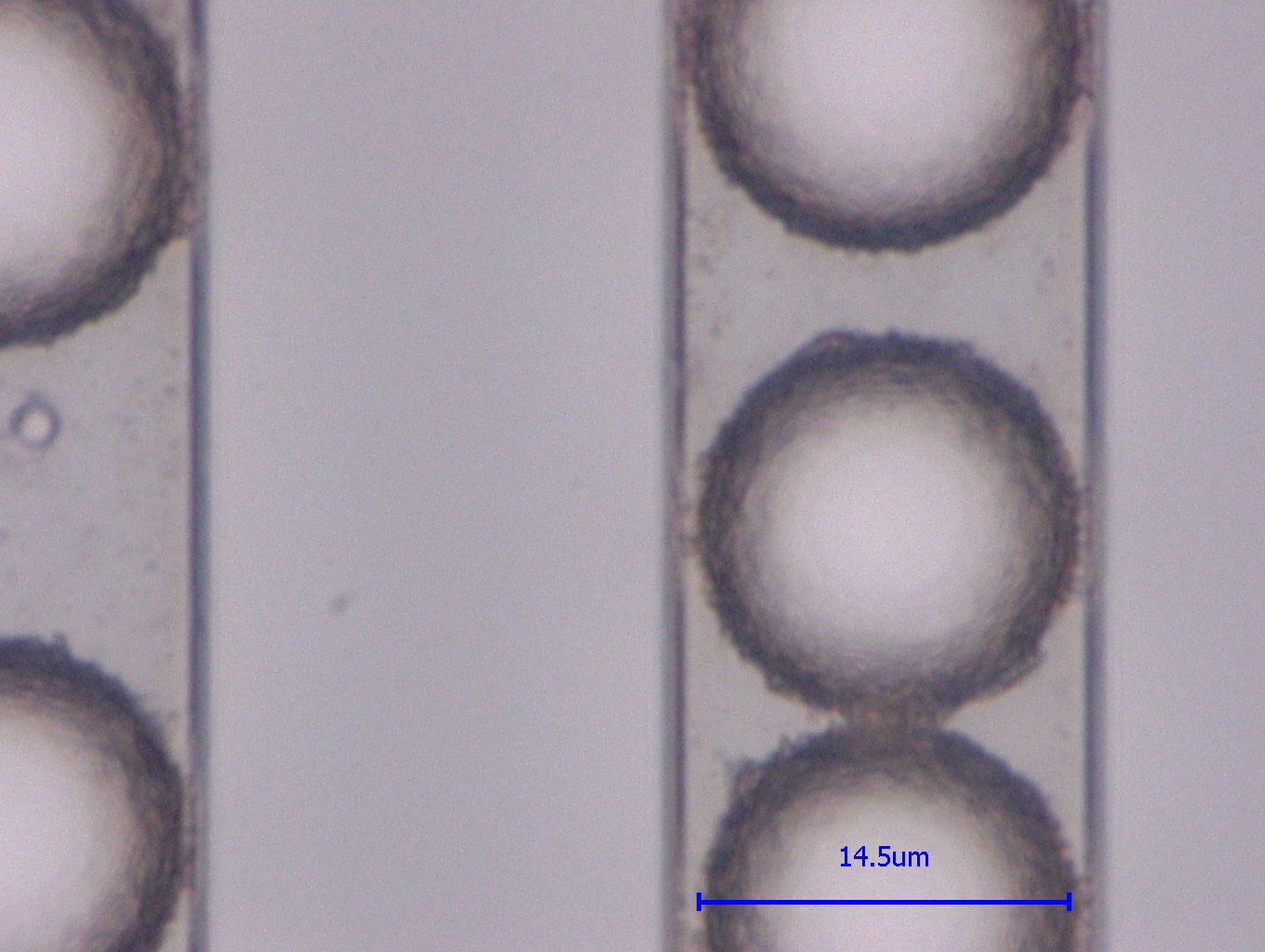Team:BIOTEC Dresden/Results Vesicles
From 2009.igem.org
| (15 intermediate revisions not shown) | |||
| Line 1: | Line 1: | ||
{{:Team:BIOTEC_Dresden/NewTemplate}} | {{:Team:BIOTEC_Dresden/NewTemplate}} | ||
| - | === | + | === Vesicle formation in Microfluidic Chamber === |
| - | |||
| - | + | The video shows the formation of vesicles in a V-chamber. The surfactant Span 80 at a concentration (V/V) of 1% was dissolved in the oil phase. The flow rates used were different for every chamber used and are hence not transferable to other systems. Vesicle size varied with applied flow rates: increased flow rates of the aqueous phase yielded in larger vesicles. Above a critical flow rate the aqueous phase would displace the oil phase. | |
| - | + | Vesicle formation in V-chamber. Surfactant: 1% Span 80 | |
| - | + | <html> | |
| + | <object width="425" height="344"><param name="movie" value="http://www.youtube.com/v/iq1ZRdI3eto&hl=en&fs=1&"></param><param name="allowFullScreen" value="true"></param><param name="allowscriptaccess" value="always"></param><embed src="http://www.youtube.com/v/iq1ZRdI3eto&hl=en&fs=1&" type="application/x-shockwave-flash" allowscriptaccess="always" allowfullscreen="true" width="425" height="344"></embed></object> | ||
| + | </html> | ||
| + | The vesicles have been observed in the monitoring section of the microfluidic chamber. Figure 1 shows a typical vesicle moving through a channel. | ||
| + | {| | ||
| + | | [[Image:vesicle_4.jpg|thumb|400|Fig. 1: Vesicles moving through microfluidic channel]] | ||
| + | |} | ||
| - | + | The typical diameter of the vesicles was 15 µm, the volume under the reasonable assumtion of spherical shape was around 12,5 pl. Figure 2 illustrates the narrow size distribution of the vesicles. | |
| - | |||
| + | {| | ||
| + | | [[Image:vesicle_2.jpg|thumb|400|Fig. 2: Multiple vesicles of near equal size]] | ||
| + | |} | ||
| - | + | The stability of the vesicles mostly exceeded 2 hours. The vesicles would fuse over night. | |
| - | + | ||
| - | + | ||
| - | The | + | |
| - | + | ||
| - | + | ||
| - | + | ||
| - | + | ||
{{:Team:BIOTEC_Dresden/NewTemplateEnd}} | {{:Team:BIOTEC_Dresden/NewTemplateEnd}} | ||
Latest revision as of 02:57, 22 October 2009
Vesicle formation in Microfluidic Chamber
The video shows the formation of vesicles in a V-chamber. The surfactant Span 80 at a concentration (V/V) of 1% was dissolved in the oil phase. The flow rates used were different for every chamber used and are hence not transferable to other systems. Vesicle size varied with applied flow rates: increased flow rates of the aqueous phase yielded in larger vesicles. Above a critical flow rate the aqueous phase would displace the oil phase.
Vesicle formation in V-chamber. Surfactant: 1% Span 80
The vesicles have been observed in the monitoring section of the microfluidic chamber. Figure 1 shows a typical vesicle moving through a channel.
The typical diameter of the vesicles was 15 µm, the volume under the reasonable assumtion of spherical shape was around 12,5 pl. Figure 2 illustrates the narrow size distribution of the vesicles.
The stability of the vesicles mostly exceeded 2 hours. The vesicles would fuse over night.
 "
"






